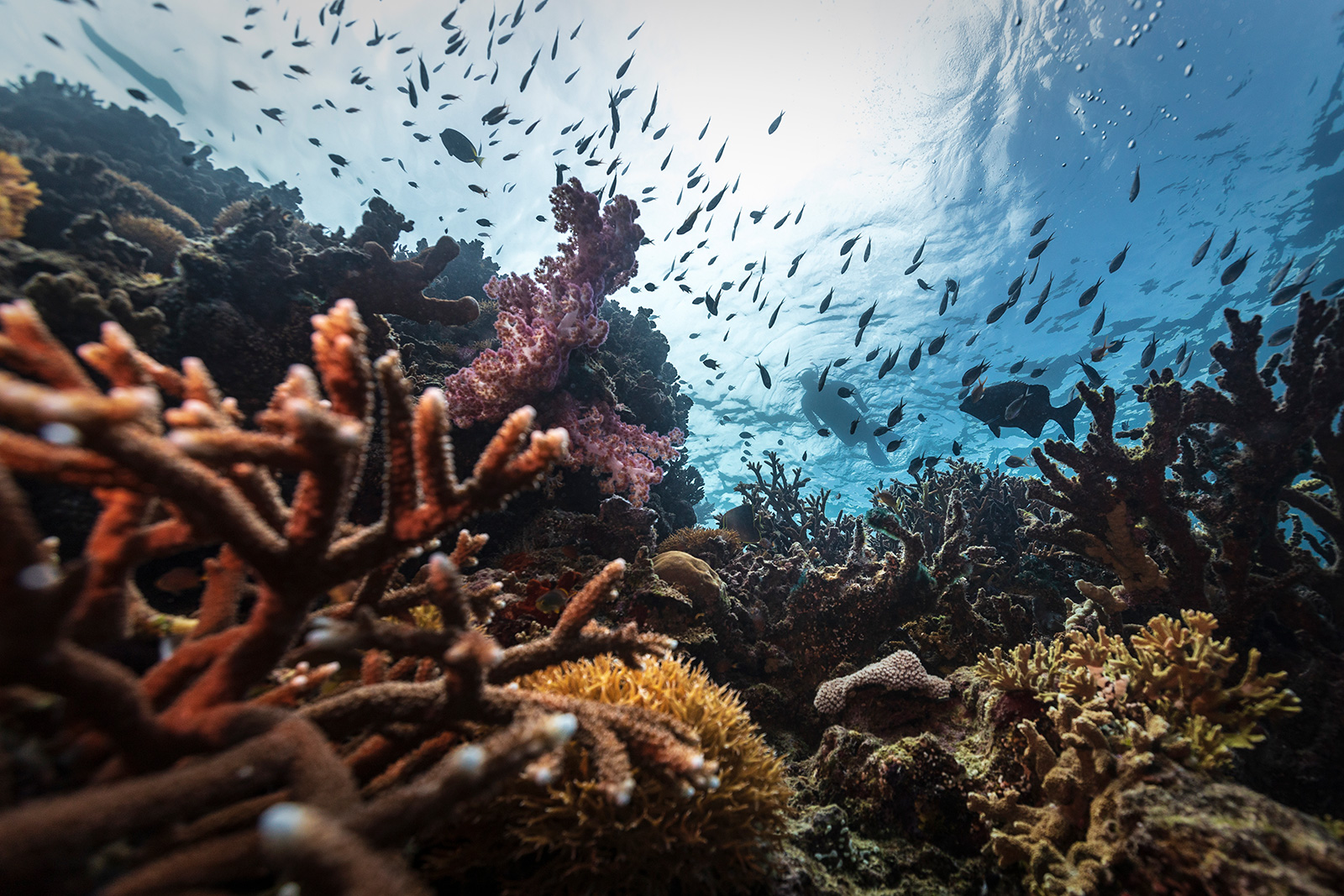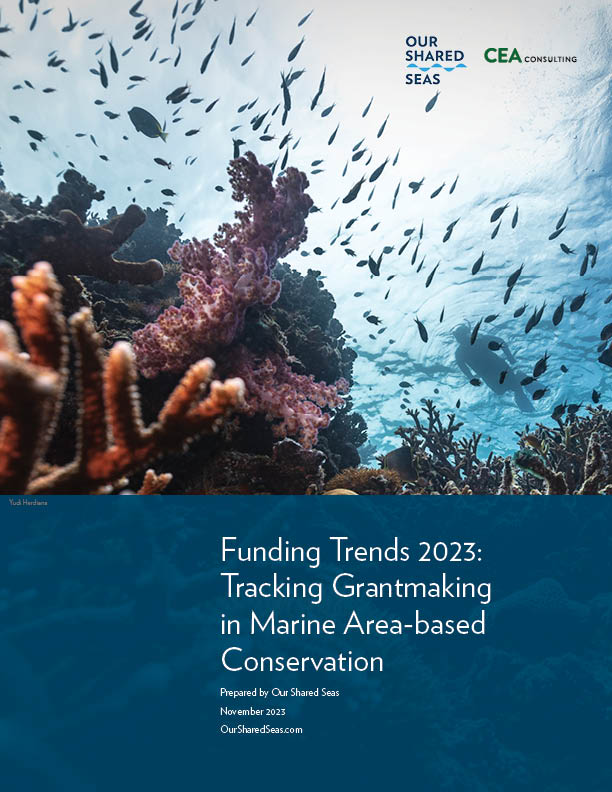Over the last year, the world pledged to protect 30 percent of the ocean by 2030 (30×30) and adopted a new High Seas Treaty. Achieving the 30×30 goal—the most ambitious global area-based target ever adopted—will require scaling up ocean protection by more than 3 times in just 7 years. Meeting these commitments will also require a rapid resource mobilization effort targeting ocean protection.


Photo: Yudi Herdiana
Our Shared Seas prepared a report—Funding Trends 2023: Tracking Grantmaking in Marine Area-based Conservation—to track key funding trends and flows among the philanthropic foundations leading the way in supporting a critical component of ocean protection – marine area-based conservation (MABC), including marine protected areas (MPAs). This report represents the most comprehensive global mapping of philanthropic funding flows for MABC ever conducted.
Key Findings
- Annual philanthropic funding for marine area-based conservation has nearly tripled in the past decade, to USD 122 million in 2022. This increase in funding is driven by long-standing funders in the space—such as the David and Lucile Packard Foundation, Gordon and Betty Moore Foundation, and Oceans 5—as well as new and expanded commitments in recent years, including from Bloomberg Philanthropies, Oceankind, and the Bezos Earth Fund, among others.
- Still, philanthropic funding levels for marine area-based conservation amount to roughly 13 percent of domestic expenditures on MPAs, which highlights the necessity for sectors to collaborate and complement each other’s strategic roles.
- A significant scale-up in financial resources—and the equitable distribution of funding—are essential for the implementation of the Global Biodiversity Framework. Funding needed to protect 30 percent of the ocean is estimated at USD 9-12 billion per year, which is 9 to 12 times greater than current spending in Marine Protected Areas (MPAs) globally, according to a report from the United Nations Environment Program. A resource mobilization effort at this scale requires an all-hands-on-deck effort, with active participation of the public, private, and philanthropic sectors.
This report is divided into two main sections: a) key findings which include the results of this original research on the philanthropic funding landscape, and b) case studies, authored by external partners, which illustrate both lessons learned and emerging insights from marine area-based conservation projects around the world.

